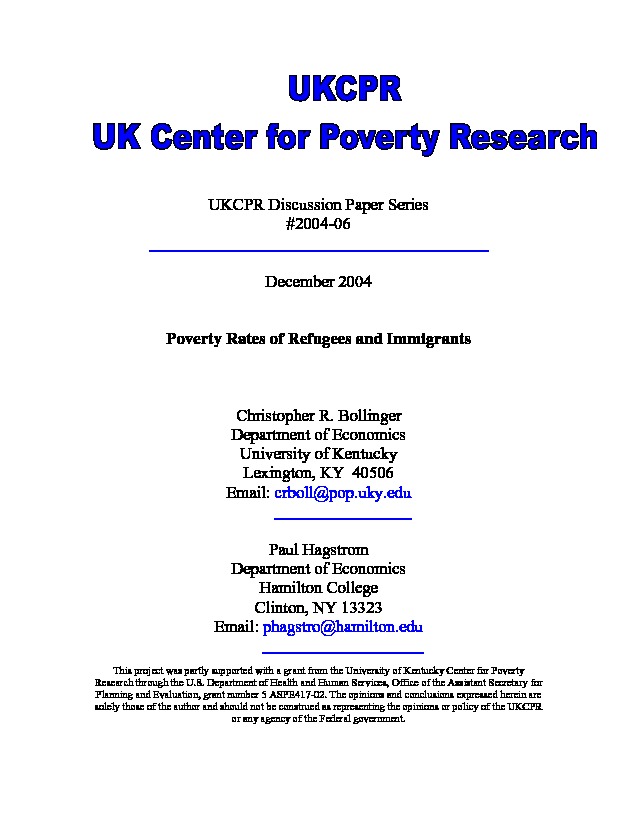Refugees are typically poorer than other immigrants and native born, although the average difference is smal, with changes in the unemployment rate explaining most of the difference in poverty rates. In times of recession, or in areas with particularly high unemployment rates, refugees will fare worse, perhaps due to concentrations of refugees in industries with higher cyclical variation in unemployment. We also find that refugees’ poverty rates start higher but fall more rapidly with time, suggesting that refugees assimilate more rapidly than other immigrants. We also find marked differences in the poverty rates of immigrants and refugees across regions. The evidence on poverty rates suggests that some regions are better than others at filling the poverty gap for immigrants than refugees.
Research
PovertyPDF Thumbnail
